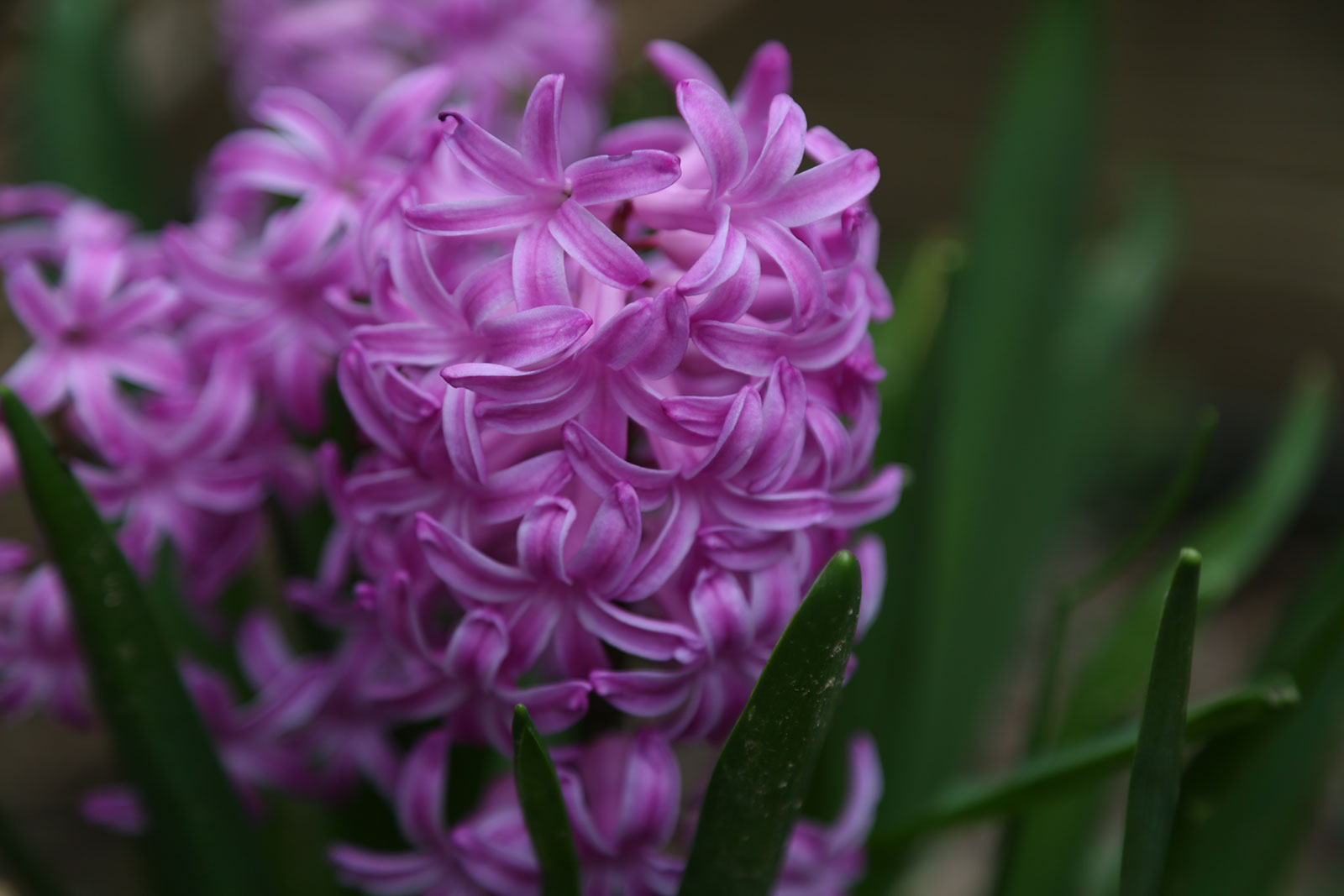Hyacinth
From the hope-giving emergence of their waxy green tips in late winter, to the overwhelming sweetness of their beautiful blooms in early spring, hyacinths encourage whimsy and joy everywhere they grow!
Scientific Name: Hyacinthus orientalis
Common Name: Hyacinth, Dutch hyacinth, garden hyacinth, or common hyacinth
Etymology: First known use (1553) of the Latin Hyacinthus, used by ancients to refer to a precious stone, sometimes held to be a sapphire. From Greek, hyakinthos, meaning a flowering plant resembling a lily and specific to the flowers said to have sprung from Hyacinth's blood in Greek myth. Latin orientale, meaning “eastern” or “from the orient.”
Traditional Uses
In traditional medical practices, Hyacinthus orientalis was used as a hemostatic to treat hemorrhoids and aid in wound healing. Hyacinthus orientalis has been believed to produce disease-healing effects, including treatment of cancer. Some studies suggest that the bulb is composed of extractable chemicals that have anticancer and immunomodulatory effects; however, more research is needed to confirm these findings. Chemical analysis has shown that the flowers of Hyacinthus orientalis contain acylated anthocyanins, which are known to have antioxidant, anti-inflammatory, and anti-mutagenesis effects.
Edible Parts
No part of Hyacinthus orientalis is edible, especially the bulb which contains toxic alkaloids.
Permaculture Functions and Considerations
- Perennial
- Low maintenance
- Attract pollinators
- Can be grouped in beds and borders in peripheral/underutilized spaces along a path, effectively mix with other bulbs, act as containers
- Can be cultivated indoors and induced to flower at different seasons, for ornamental purposes (process known as “forcing”)
- Intense, sweet fragrance enhances sensory experience of a space
Habitat
Hyacinths prefer well-drained soil and full sunlight. They are common in cultivated garden spaces and while they grow in the wild, they are cultivated heavily around the Christmas season in indoor spaces using forcing methods.
How to Identify
Hyacinthus orientalis are recognizable by their thick, singular stalks bearing clusters of vibrantly colored, bell-shaped flowers, all of which are typically the same color on an individual plant but across different individuals plants range between red, pink, blue, white, and purple. The leaves are whorled around the base of the stalk and emerge upright around the flower, like arms held upward from the body of the plant.

Wildlife Support
Among the first bulbs to emerge, hyacinths are important sources of nectar for pollinators in the early spring when food sources are not yet abundantly available.
Symbolism/Literary Significance
According to Greek literature, Hyacinth was a beautiful Spartan prince and a favored lover of the sun god Apollo. Though variations of the tale exist, it is commonly told that while teaching Hyacinth to throw the discus, the god mistakenly struck Hyacinth in the forehead — whether due to interference by the Fates in the sky or from throwing with too much vigor — causing the mortal's death. Unable to heal the wound and unable to join his lover in death as an immortal, from Hyacinth's blood Apollo raised beautiful blooms to memorialize his love and express his deep regret for the inability to bring him back to life. Some versions say that the Zephyrus, the god of the West Wind, was jealous of Apollo's relationship with Hyacinth and caused the discus to veer from course and kill the prince, but both versions maintain the flowers as Apollo's way of immortalizing Hyacinth.
Depending on the color of the flower, its symbolism varies from joy, jealousy, a desire for forgiveness, an expression of grief, and intense regret.
The beautiful, symbolic figure of the hyacinth continues to appear in modern art and writing, such as in the song "bundle of hyacinths" by field medic (feat. Samia).
Additional Information
Hyacinths were once considered a part of the lily family; more recent genetic studies, however, have shown all varieties of Hyacinthus to be in the Asparagaceae family.
Sources
- Hadden, Evelyn J. “Living with Wildlife.” Hellstrip Gardening. Timber Press, Inc. 2014.
- Hamilton, Edith. “The Earliest Heroes.” Mythology: Timeless Tales of Gods and Heroes. Little, Brown and Company, 1942.